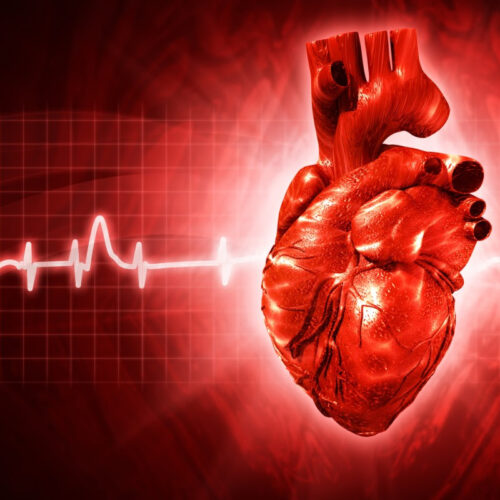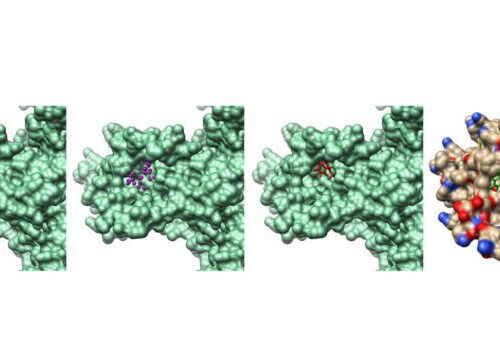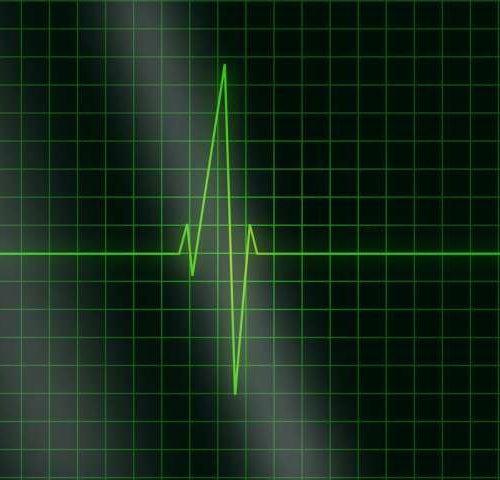by Texas Heart Institute Design of injectable hydrogel electrode. Redox initiation reaction of polyether urethane diacrylamide (PEUDAm) macromer + N-acryloyl glycinamide (NAGA) delivered using double barrel syringe with a mixing head. Ammonium persulfate (APS) and iron gluconate (IG) are used as initiator and reducing agents. Resulting hydrogels display bidentate hydrogen bonding at netpoints for improved...
Tag: <span>arrhythmia</span>
Deadly arrhythmia trifecta: Salt, swelling, and leaky sodium channels
by Whitney Slightham, Virginia Tech Xiaobo Wu, the study’s first author and a graduate student in Virginia Tech’s Translational Biology, Medicine, and Health Program, was mentored by Steven Poelzing, the study’s principal investigator and an associate professor at the Fralin Biomedical Research Institute. Credit: Clayton Metz / Virginia Tech Less than 1% of the population...
Radiation to the heart corrects arrhythmia by reactivating younger state
By Michael Irving September 28, 2021 Scientists have found that radiation therapy could be a less invasive treatment for arrhythmia Tolokonov/Depositphotos Scientists at the Washington University School of Medicine have made an intriguing discovery that could see radiation therapy become a less invasive treatment for heart arrhythmia. The technique seems to activate the heart cells...
COMPOUND MAY PREVENT ARRHYTHMIA SIDE EFFECT
Many drugs that are effective against cancer, infections, and other diseases, can induce a lengthening of the heart’s electrical event, or action potential, as an adverse side effect. This can render these drugs unsafe or too risky for patients. According to the American Heart Association, heart arrhythmias contribute to about 200,000 to 300,000 sudden deaths a...
Compound may prevent risk of form of arrhythmia from common medications
Dozens of commonly used drugs, including antibiotics, anti-nausea and anticancer medications, have a potential side effect of lengthening the electrical event that triggers contraction, creating an irregular heartbeat, or cardiac arrhythmia called acquired Long QT syndrome. While safe in their current dosages, some of these drugs may have a more therapeutic benefit at higher doses...
New at-home heart monitoring technique could reduce hospital visits and save lives
by Ben Robinson, University of Manchester A simple new heart-monitoring technique has been developed to help people self-monitor their conditions at home without the need for hospital visits. University of Manchester researchers have developed a simple technique that allows people to monitor their own electrocardiogram (ECG) for a potentially life-threatening condition. Previously people needed to...
STUFF ( quercertin) IN CAPERS ACTIVATES KEY PROTEINS IN BRAIN AND HEART
A compound common in pickled capers, quercetin, activates proteins required for normal human brain and heart activity, researchers report. In a new study in Communications Biology, the researchers report that quercetin can directly regulate proteins required for bodily processes such as the heartbeat, thought, muscular contraction, and normal functioning of the thyroid, pancreas, and gastrointestinal...
Finnish mobile device for detecting arrhythmia soon available for consumers
The VTT spin-off, VitalSignum, is making a small mobile device that detects arrhythmia by measuring the patient’s ECG – available to consumers. The first production batch is being completed and will be retailed to consumers in early October. The device has been tested, with good results, on heart patients for three years at the University Hospital of...




